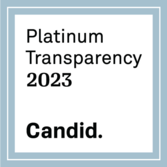SLUDGE MANAGEMENT
Sludge management is the end of the treatment train for solids. The sludge or solids that have been removed from wastewater by either primary or secondary treatment must also be processed before it can be disposed or reused. The management of sludge or biosolids has been a constant challenge for communities. Since 1991, the United States federal government has outlawed the ocean dumping of sewage sludge, causing the need to find ways to dispose of sludge.
Several options for sludge disposal currently being applied include: disposal in a landfill, composting, incineration, and land application.
- Landfill disposal includes dewatering sludge to remove water to reduce costs of transport and disposal and the use of the remaining substance to cover or add to a landfill.
- Composting sludge in similar to garden composting with grass clippings, but involves allowing sludge to lie in a static pile with wood chips or mulch.
- In sludge incineration, slue is burned and the ashes are transported to a landfill for disposal.
- Land application involves transporting the sludge to a specific site, such as a farm or an agricultural entity, where it is spread onto the soil and used for its nutrient value, the same way the fertilizers are used.
Reusing sludge that is clean and treated is a way of recycling nutrients back to land. Groups and various organizations around the country are developing safe standards for land application of processed sewage sludge.
Further information can be obtained from:
- US Environmental Protection Agency: www.epa.gov/owm.bio.html
- Cornell Waste Management Institute: www.cfe.cornell.edu/wmi/sludge.html
- Environmental Working Group: www.ewg.org/pub/home/reports/sludgememo/sludge.html
- National Research Council: www4.nationalacademics.org/cp.nsf

